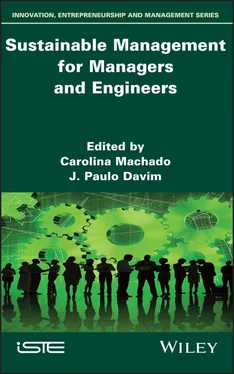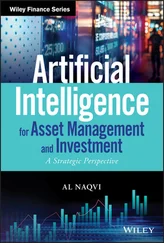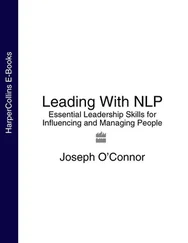114 112
115 113
116 114
117 115
118 116
119 117
120 118
121 119
122 120
123 121
124 122
125 123
126 124
127 125
128 126
129 127
130 128
131 129
132 130
133 131
134 132
135 133
136 134
137 135
138 136
139 137
140 138
141 139
142 140
143 141
144 142
145 143
146 144
147 145
148 146
149 147
150 148
151 149
152 150
153 151
154 152
155 153
156 154
157 155
158 157
159 158
160 159
161 160
162 161
163 162
164 163
165 164
166 165
167 166
168 167
169 168
170 169
171 170
172 171
173 172
174 173
175 174
176 175
177 176
178 177
179 178
180 179
181 180
182 181
183 182
184 183
185 184
186 185
187 186
188 187
189 189
190 190
191 191
192 192
193 193
194 194
195 195
196 196
197 197
198 198
199 199
200 200
201 201
202 202
203 203
204 204
205 205
206 206
207 207
208 208
209 209
210 210
211 211
212 212
213 213
214 214
215 215
216 216
217 217
218 218
219 219
220 220
221 221
222 222
223 223
224 225
225 226
226 227
227 228
228 229
229 230
230 231
231 232
232 233
233 234
234 235
235 236
236 237
237 238
238 239
239 240
240 241
241 242
242 243
243 244
244 245
245 246
246 247
247 248
248 249
249 250
250 251
251 252
252 253
253 254
254 255
255 256
256 257
257 258
258 259
259 260
260 261
261 262
262 263
263 264
264 265
265 266
266 267
267 268
268 269
269 270
270 271
271 272
272 273
273 274
274 275
275 276
276 277
277 278
278 279
279 280
280 281
Sustainable Management for Managers and Engineers
Edited by
Carolina Feliciana Machado
J. Paulo Davim

First published 2020 in Great Britain and the United States by ISTE Ltd and John Wiley & Sons, Inc.
Apart from any fair dealing for the purposes of research or private study, or criticism or review, as permitted under the Copyright, Designs and Patents Act 1988, this publication may only be reproduced, stored or transmitted, in any form or by any means, with the prior permission in writing of the publishers, or in the case of reprographic reproduction in accordance with the terms and licenses issued by the CLA. Enquiries concerning reproduction outside these terms should be sent to the publishers at the undermentioned address:
ISTE Ltd
27-37 St George’s Road
London SW19 4EU
UK
www.iste.co.uk
John Wiley & Sons, Inc.
111 River Street
Hoboken, NJ 07030
USA
www.wiley.com
© ISTE Ltd 2020
The rights of Carolina Feliciana Machado and J. Paulo Davim to be identified as the authors of this work have been asserted by them in accordance with the Copyright, Designs and Patents Act 1988.
Library of Congress Control Number: 2020944442
British Library Cataloguing-in-Publication Data
A CIP record for this book is available from the British Library
ISBN 978-1-78630-439-1
Based on two main concepts – sustainability and management – Sustainable Management is understood as the application of sustainable practices in different areas, namely business, the environment, society as a whole, as well as in daily life, and managing them in order to benefit both current and future generations. With the possibility of being applied to all aspects of our lives, sustainable management is critical as it is seen as the ability to successfully maintain the quality of life on our planet.
In a competitive and complex world where requirements from the different fields are ever increasing, organizations need to be responsible for their actions in the markets in which they operate. However, this responsibility cannot be seen as a one-time action but as a continuous process, under which organizations ought to use the different resources effectively, that will answer to the present and future requirements of the different stakeholders. Indeed, if from one side the organization influences the market, from the other side, the market – understood in its different perspectives, economic, social, environmental, political – also influences the organization. As a result of the interaction between the organization and the market, in order to be effective, the organization needs to think and act in a sustainable way. Occupying critical positions within the organizational structure, with a significant influence on their collaborators’ performances, the role developed by managers and engineers is highly relevant in the sustainable success of the organization.
Taking into account these concerns, and giving particular attention to the needs of managers and engineers as they look to develop sustainable management – able to answer to the present and future needs of the organization – this book covers the issues related to sustainable management in a context where organizations are, increasingly, facing deep challenges such as the need to introduce recycling and repurposing practices, waste reduction, lower cost and more timely production, add value, as well as develop sustainable behaviors. Nowadays organizational activities should be managed under strategic and sustainable policies.
Conscious of this reality, this book contributes to the exchange of experiences and perspectives about the state of the research related to sustainable management, with a particular focus in the role that needs to be developed by managers and engineers, as well as the future direction of this field of research. The content provides support to academics and researchers, as well as to those operating in the management field who need to deal with policies and strategies related to sustainable management issues.
Organized in nine chapters, this book covers the following: Chapter 1focuses on “Choice Architecture: Nudging for Sustainable Behavior”; Chapter 2covers “Embedding Corporate Sustainability in Human Resource Management Practice”; Chapter 3centers on “Competency Cultivation of Mechanical Engineers in the Process of Social Sustainable Development”; Chapter 4addresses the “Essentials of Sustainability: A Roadmap for Businesses”; Chapter 5looks at “Styles of Leadership and Perceptions of Corporate Social Responsibility”; Chapter 6focuses on “Corporate Social Responsibility Reporting: Background, Evolution and Sustainability Promoter”; Chapter 7covers “Integrated Management Systems Under the Sign of Sustainable Development: Risks and Opportunities”; Chapter 8analyzes “Mentoring… Really? And Why Not?”; and finally, Chapter 9draws a distinction, “Stop Camouflaging it in Green: Do Not Confuse Corporate Social Responsibility with Sustainable Management”.
The mission of this book is to provide a channel of communication to disseminate knowledge of how to manage in an environment where concerns around sustainable management present a challenge, among academics/researchers, managers and engineers.
Читать дальше













